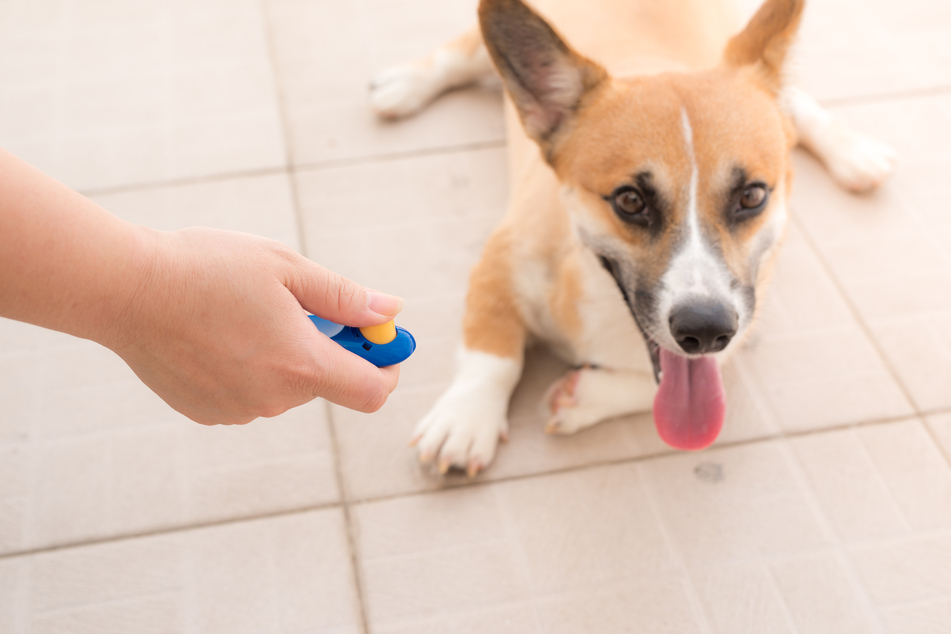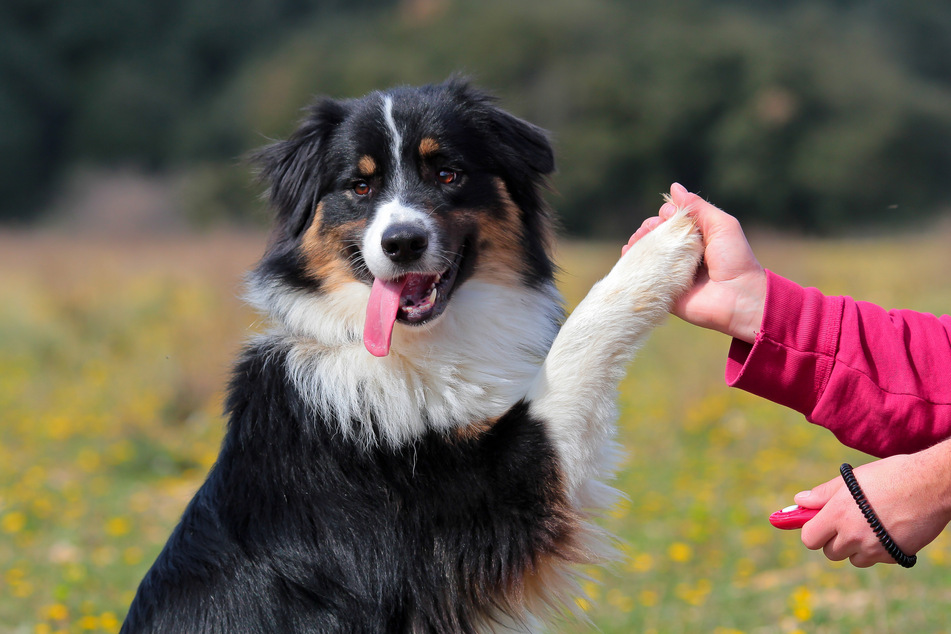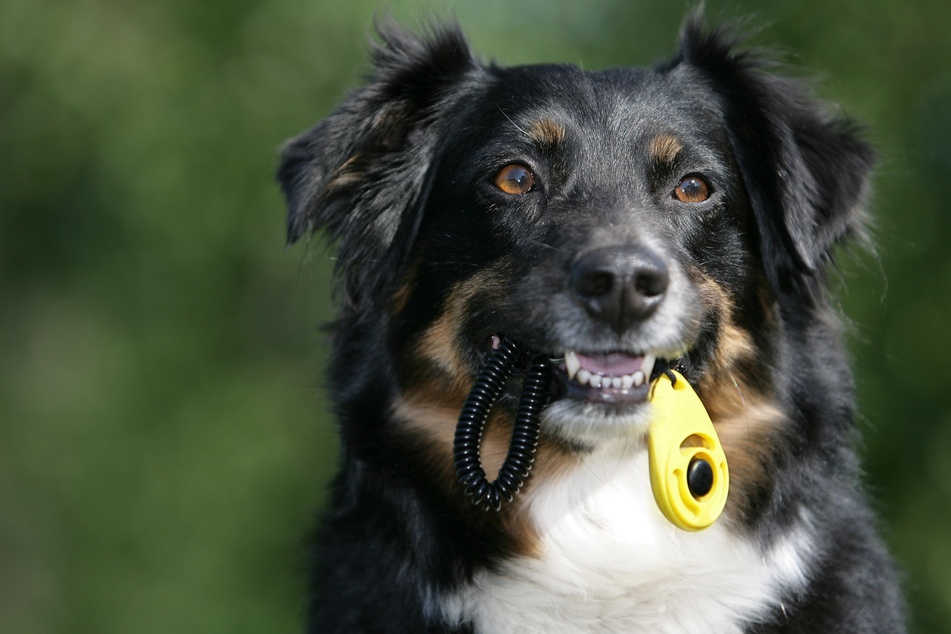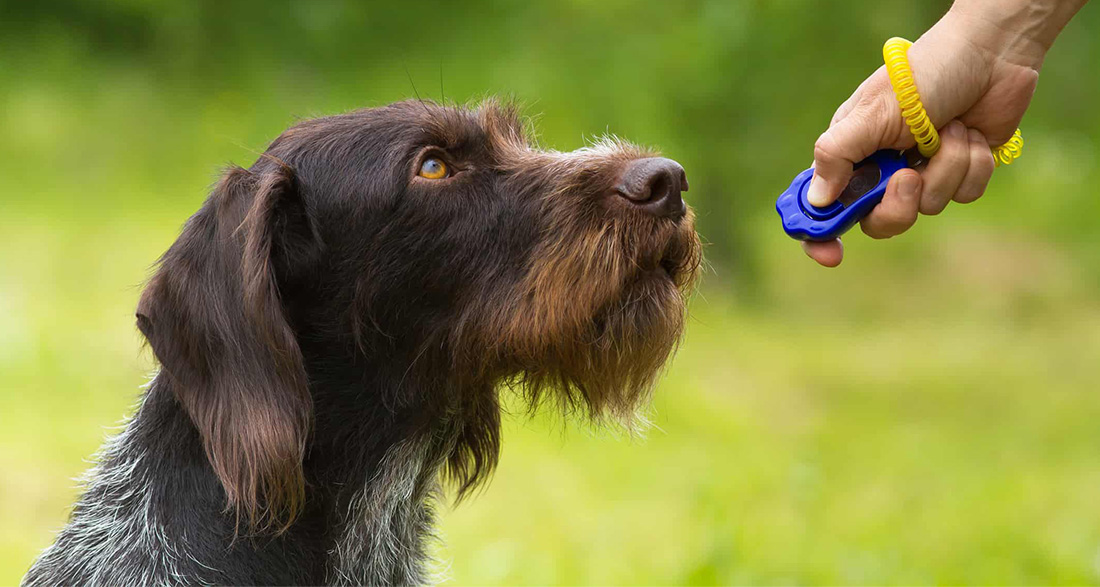Clicker training for dogs is very popular, and for a good reason – it is highly effective and easy to implement. However, to make it work, there are several things you need to consider. This guide explains what you need to know.
Many dog owners wouldn’t want to miss clicker training for their dogs as it is a very useful method for dog training, teaching commands, and tricks.
Naturally, dogs are individuals; some may take a bit longer to catch on, while others may show the training effect sooner. However, in general, all dogs tend to respond well to this type of training, and the first moments of success become evident quickly.
This is likely due to the use of rewards in clicker training – a great motivation for the animal.
iHugDogs provides useful information and training tips for you to make clicker training with your dog work effectively.
What is Clicker Training?

Clicker training is a method that promotes desirable behavior using an acoustic signal.
A clicker is a small device with a button that produces a short, sharp clicking sound. In theory, you can use a bell, whistle, or anything that produces an audible, preferably short, signal instead of a clicker.
By giving a reward, usually in the form of a treat, immediately after the sound, the animal associates the action with the reward. It learns that it has done something right and is motivated to do it again.
In essence, clicker training is the conditioning of the dog.
Is Clicker Training with Dogs Beneficial?

Clicker training is very beneficial because it requires few tools (clicker and reward), shows very quick results, and allows you to start immediately. A significant advantage is that the clicking sound occurs very quickly if you focus on the right timing.
What’s good about this method is that it belongs to the type of dog training that works with positive reinforcement rather than punishment – and that’s how it should be!
Another plus is that the clicker is neutral, meaning the dog does not emotionally connect with the clicking sound. But, of course, it does connect with you and, consequently, your voice. Training is more effective on a neutral basis.
And lastly, clicker training has a playful aspect – just the right thing for dogs to provide them with new input and mentally stimulate them.
When Should You Start Clicker Training?
There is no age limit for clicker training; you can train with a puppy or a senior dog using a clicker. Due to the already developed bond with you, it might even be that an adult dog quickly responds to the new training.
Which Clicker Is Good for Dogs?

In essence, you can use any clicker, and they are usually not expensive (they cost only a few dollars).
- Tip 1: The clicker should be small and handy, fitting into your pocket so that you can always carry it with you and have it ready quickly.
- Tip 2: Use only one clicker. Different clickers or sounds would confuse your dog. Even minimal differences that humans may not perceive can be heard by the dog.
- Tip 3: The clicking sound should be loud enough for your dog to hear it over a few meters away, in case you are practicing with him outdoors.
How Do I Train My Dog with the Clicker?
With this simple 4-point plan, you can introduce your dog to the new training method:
- 1. Point – Association: Initially, the dog needs to learn that the clicking sound is associated with the reward and thus with a specific action. The first time, it might be surprised by the clicking sound. Therefore, the next point is crucial.
- 2. Point – Timing: Give your pet the treat or reward immediately after the click. This should only take one or two seconds; otherwise, it won’t understand the connection. For example, if the dog sits, you click immediately and give it the reward directly, having it ready in your hand to make it quick. You can also keep the hand with the treat in your pocket to distract the dog less.
Tip
It’s best to practice your reaction time in the absence of the dog. Create a task where you can practice clicking at a specific time. For example, ask someone to drop something and practice clicking at the exact moment the object touches the ground.
- 3. Point – Take Your Time: Never overwhelm the dog. Slowly increase the difficulty of your tasks, and take a break if you notice your dog getting tired, disinterested, or confused by the training.
- 4. Point – Click AND Reward: Clicker training without a reward does not work in the long run. Clicking creates an expectation. If there is no reward consistently, it can frustrate the dog and lead to a point where it no longer responds to the clicker.
Tip
A reward can also be giving a toy or a loving pet. Especially if you train a lot with your pet, constant snacks can lead to overweight. So, be cautious!
Conclusion: With the right clicker training for dogs, you achieve quick success. Above all, it should be enjoyable and bring variety. If you consistently use the same sound, have a good reward ready, and always pay attention to the right timing, your dog will soon become a pro in clicker training!


